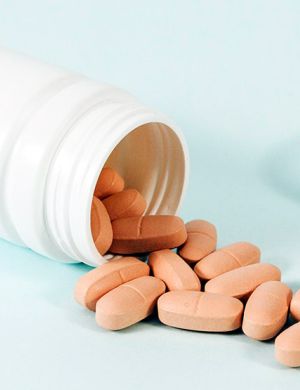
Medical Devices-USA/Europe Regulatory News-Feb 2023
USA (FDA)
Surveying, Leveling, and Alignment Laser Products – Guidance for Industry and Food and Drug Administration Staff
The guidance is intended to summarize FDA’s current thinking on the applicability of FDA’s performance standards for laser products to specific purpose SLA laser products. This guidance is not intended to serve as a replacement for the performance standards themselves.
FDA finalized its Q&A guidance that answers questions such as what constitutes a laser product used for surveying, leveling and alignment (SLA) that it will regulate. The agency notes that it has the authority to regulate radiation-emitting electronic products, including all types of lasers. As part of that mandate, it sets radiation safety product performance standards that laser manufacturers must adhere to in order to market their products.
Medical Devices; Neurological Devices; Classification of the Digital Therapy Device to Reduce Sleep Disturbance for Psychiatric Conditions
The Food and Drug Administration (FDA) is classifying the digital therapy device to reduce sleep disturbance for psychiatric conditions into class II (special controls). The special controls that apply to the device type are identified in this order and will be part of the codified language for the digital therapy device to reduce sleep disturbance for psychiatric conditions’ classification.
US FDA is taking this action because they have determined that classifying the device into class II (special controls) will provide a reasonable assurance of safety and effectiveness of the device and believe this action will also enhance patients’ access to beneficial innovative devices.
Medical Devices; Cardiovascular Devices; Classification of the Hardware and Software for Optical Camera-Based Measurement of Pulse Rate, Heart Rate, Breathing Rate, and/or Respiratory Rate
The Food and Drug Administration (FDA) is classifying the hardware and software for optical camera-based measurement of pulse rate, heart rate, breathing rate, and/or respiratory rate into class II (special controls). The special controls that apply to the device type are identified in this order and will be part of the codified language for the hardware and software for optical camera-based measurement of pulse rate, heart rate, breathing rate, and/or respiratory rate’s classification.
US FDA is taking this action because they have determined that classifying the device into class II (special controls) will provide a reasonable assurance of safety and effectiveness of the device and believe this action will also enhance patients’ access to beneficial innovative devices.
Medical Devices; Orthopedic Devices; Classification of the Resorbable Shoulder Spacer
The Food and Drug Administration (FDA) is classifying the resorbable shoulder spacer into class II (special controls). The special controls that apply to the device type are identified in this order and will be part of the codified language for the resorbable shoulder spacer’s classification.
Medical Devices; Physical Medicine Devices; Classification of the Electroencephalography-Driven Upper Extremity Powered Exerciser
The Food and Drug Administration (FDA) is classifying the electroencephalography (EEG)-driven upper extremity powered exerciser into class II (special controls). The special controls that apply to the device type are identified in this order and will be part of the codified language for the electroencephalography (EEG)-driven upper extremity powered exerciser’s classification.
Medical Devices; Physical Medicine Devices; Classification of the Virtual Reality Behavioral Therapy Device for Pain Relief
The Food and Drug Administration (FDA) is classifying the virtual reality behavioral therapy device for pain relief into class II (special controls). The special controls that apply to the device type are identified in this order and will be part of the codified language for the virtual reality behavioral therapy device for pain relief’s classification.
Medical Devices; Neurological Devices; Classification of the Brain Stimulation Programming Planning Software
The Food and Drug Administration (FDA) is classifying brain stimulation programming planning software into class II (special controls). The special controls that apply to the device type are identified in this order and will be part of the codified language for the brain stimulation programming planning software’s classification.
Medical Devices; Orthopedic Devices; Classification of the Bone Indentation Device
The Food and Drug Administration (FDA) is classifying the bone indentation device into class II (special controls). The special controls that apply to the device type are identified in this order and will be part of the codified language for the bone indentation device’s classification.
Medical Devices; Orthopedic Devices; Classification of the Implantable Post-Surgical Kinematic Measurement Knee
The Food and Drug Administration (FDA) is classifying the implantable post-surgical kinematic measurement knee device into class II (special controls). The special controls that apply to the device type are identified in this order and will be part of the codified language for the implantable post-surgical kinematic measurement knee device’s classification.
CANADA (HC)
Updated guidance on how to apply for a manufacturer’s certificate to export (MCE)
The updated guidance document provides information on the application process and the issuance of an electronic MCE and how to confirm the validity of a medical device license and authorization before submitting an application
EUROPE
Annual overview of devices subject to the clinical evaluation consultation procedure (CECP)
According to Article 54 of the MDR, a notified body (NB) shall follow a clinical evaluation consultation procedure (CECP) when performing a conformity assessment of certain high-risk devices, namely class III implantable devices and class IIb active devices intended to administer and/or remove a medicinal product (ARMP devices).
The purpose of the Clinical Evaluation Consultation Procedure (CECP) is the provision of independent scientific opinions by expert panels designated pursuant to Commission Implementing Decision (EU) 2019/13962 on the NB’s clinical evaluation assessment report (CEAR) based on the manufacturer’s clinical evidence.
Information session on the pilot for expert panels’ scientific advice to manufacturers of high-risk medical devices
EMA is launching a pilot to provide scientific advice to manufacturers of certain high-risk medical devices. As per Article 61(2) of Regulation (EU) 2017/745 on medical devices, the expert panels may give scientific advice to manufacturers of some high-risk medical devices on their intended clinical development strategies and proposals for clinical investigations “class III medical devices and class IIb active medical devices intended to administer or remove medicinal products from the body”.
Starting at the end of February, the agency will be accepting letters of interest from companies that would like to be considered for the pilot and organised by the EMA on 25 January to provide further information on the pilot, Registration is free and open until 23 January.
DIRECTIVE (EU) 2022/2555 OF THE EUROPEAN PARLIAMENT AND OF THE COUNCIL on measures for a high common level of cybersecurity across the Union, amending Regulation (EU) No 910/2014 and Directive (EU) 2018/1972, and repealing Directive (EU) 2016/1148 (NIS 2 Directive)
Directive (EU) 2016/1148 of the European Parliament and the Council aimed to build cybersecurity capabilities across the Union, mitigate threats to network and information systems used to provide essential services in key sectors and ensure the continuity of such services when facing incidents, thus contributing to the Union’s security and to the effective functioning of its economy and society.
In Medical Device Sector
Manufacture of medical devices and in vitro diagnostic medical devices
- Entities manufacturing medical devices and entities manufacturing in vitro diagnostic medical devices with the exception of entities manufacturing medical.
- Entities carrying out research and development activities of medicinal products
- Entities manufacturing basic pharmaceutical products and pharmaceutical preparations
- Entities manufacturing medical devices considered to be critical during a public health emergency (public health emergency critical devices list)
Coverage of designation codes by MDR/IVDR notified bodies – January 2023
Designation Codes coverage by MDR/IVDR notified bodies
Summary MDR codes coverage:
More than 80% of codes are covered by more than 20/36 NBs.
- Just 5 codes are covered by less than 1/3 NBs:
- MDA 0102: Active implantable devices delivering drugs or other substances
- MDA 0104: Active implantable devices utilising radiation and other active implantable devices
- MDA 0103: Active implantable devices supporting or replacing organ functions
- MDA 0101: Active implantable devices for stimulation/inhibition/monitoring
- MDS 1002: Devices manufactured utilising tissues or cells of human origin, or their derivatives
Summary IVDR codes coverage:
- Over 80% of codes are covered by 7/8 NBs;
- Only one code is covered by 5/8 NBs:
- IVD 4010: In vitro diagnostic devices which require knowledge regarding mycology
MDCG 2023-2 – List of Standard Fees
MDCG clarified the meaning of “publicly available”, which “implies that a member of the public can access this information at any point in time, without the need for additional steps.” (MDCG guidance 2019-6 section V.2.).
This implies the list of fees of each notified body should be directly and easily accessible on the website of the notified body without any additional steps, e.g. without the need to register as a user of the website or provide contact data. This website should be the website registered for the notified body on NANDO and not a different website of another organization. The format of the standard fee table could be any that is accessible on a common website browser.
The currency shown should be relevant to the country where the notified body has its registered place of business (in line with the information provided in NANDO). If there are regional differences in fees charged depending on the location of manufacturer, this should also be indicated.
EMA will launch a pilot enabling the expert panels to provide scientific advice for manufacturers of high-risk medical devices.
European Medicines Agency is set to start a pilot to enable manufacturers of high-risk medical devices to access scientific advice from the expert panels next month. The scientific advice will cover clinical development strategies and clinical investigation proposals for “class III and IIb high-risk medical devices meant to administer or remove medicinal products from the body.
The pilot is expected in February 2023. By the time of the launch, EMA will provide further information on related criteria for selection, templates for submission and timelines.
MDCG 2023-1 – Guidance on the health institution exception under Article 5(5) of Regulation (EU) 2017/745 and Regulation (EU)
The Medical Device Coordination Group (MDCG) has released guidance on how the medtech regulations apply to devices and diagnostics that are manufactured and used by health institutions in the European Union.
In-house medical devices are exempted from provisions of Regulations (EU) 2017/745 (medical devices Regulation, MDR) and (EU) 2017/746 (in vitro diagnostic medical devices Regulation, IVDR), provided the health institution Article 5(5) of the relevant Regulation. Article 5(5) sets a number of rules regarding the manufacture and use of such in-house medical devices.
The provisions in Article 5(5) are the basis for the regulatory control and oversight of in house devices. This document provides guidance on the application of some of these rules. It is written for healthcare professionals and researchers of health institutions aiming to design, manufacture, modify and use in-house devices. In addition, this guidance document intends to foster harmonised application of Article 5(5) by the national competent authorities.
REGULATION OF THE EUROPEAN PARLIAMENT AND OF THE COUNCIL amending Regulations (EU) 2017/745 and (EU) 2017/746 as regards the transitional provisions for certain medical devices and in vitro diagnostic medical devices
Reasons for and objectives of the proposal
Regulation (EU) 2017/745 (MDR) and Regulation (EU) 2017/746 (IVDR) of the European Parliament and of the Council establish a reinforced regulatory framework for medical devices and in vitro diagnostic medical devices. Their objectives are a high level of protection of health for patients and users and the smooth functioning of the internal market for these products.
To achieve these objectives and, in light of issues identified with the previous regulatory framework, the Regulations set out a more robust system of conformity assessment to ensure the quality, safety, and performance of devices placed on the EU market.
SWITZERLAND (Swissmedic)
Notification in accordance with Art. 10 IvDO for devices manufactured in healthcare institutions
The new version of the form for notification of devices manufactured and used in healthcare institutions in accordance with Art. 10 of the Ordinance on in Vitro Diagnostic Medical Devices (SR 812.219) specifies how several devices can be grouped together in a joint notification.
Instructions: A notification form should be completed for each device from a manufacturer. If several devices are in the same class and have the same EMDN code, a joint notification can be submitted for these devices. In this case, a device list with all the necessary details of the devices should be submitted.
Fees: According to the Ordinance on Fees Levied by the Swiss Agency for Therapeutic Products (FeeO-Swissmedic, SR 812.214.5), notifications of devices manufactured and used in healthcare institutions according to Art. 10 of the Ordinance on In Vitro Diagnostic Medical Devices (IvDO, SR 812.219) are subject to a fee of CHF 300 per notification.
Dealing with certification gaps (MDCG 2022-18)
Swissmedic (Switzerland’s competent authority for medical devices) implements the medical device legislation (Medical Devices Ordinance; MedDO; SR 812.213) equivalent to the EU in order to ensure an equivalent level of safety.
MDCG 2022-18 aims to achieve a common understanding of and a uniform approach to the application of Article 97 of Regulation (EU) 2017/745 on medical devices (MDR) in situations where a device is not in conformity with the MDR because its certificate issued under the previous legislation (Directives 93/42/EEC; MDD and 90/385/EEC; AIMDD) expires before issuance of the necessary certificate(s) in accordance with the new legislation (certification gap).
Where such a device does not present an unacceptable risk to health and safety, Article 97 MDR enables competent authorities to require the relevant manufacturer, or its authorized representative, to bring the non-compliance to an end within a reasonable and clearly defined period. This will ensure that the conformity of the devices concerned is established as soon as possible under the conditions set by the competent authority
GERMANY (BFARM)
Compact overview initial submission pursuant to MDR/IVDR/MPDG
The Federal Institute for Drugs and Medical Devices has issued new information on Medical Device Compact overview initial submission pursuant to MDR/IVDR/MPDG.
MDR and IVDR initial submission ─ Application to Ethics committee (EC) and Competent authority (CA) in a single form, sequential application procedure. Application is transferred to the database and can be viewed by authorized institutions (sponsor, LA, EC/CA). The process is described in the flowchart, check the below Link
NETHERLANDS (CBG MEB)
Dutch Medicines Evaluation Board (MEB) Changes consultation fees for human medicinal products and devices as of 1 January 2023
The Dutch Medicines Evaluation Board (MEB) with effect from 1 January 2023, the Medicines will be increasing the fees for authorisation applications, authorisation changes and the annual fees of human medicinal products. Fees for consultation procedures for medical devices will be increased as well.
MEB adopted the targeted fee hikes alongside an across the board increase of 6%, a figure that reflects the “salary and price developments” faced by the regulator. The board also created a new fee for major changes in the use of a medicinal product in a medical device, thereby establishing different rates for type I and type II changes.
UNITED KINGDOM (MHRA)
Notify the MHRA about a clinical investigation for a medical device
UK MHRA has issued guidance on How to notify the MHRA of your intention to carry out a clinical investigation for medical devices
To obtain UKCA / CE / CE UKNI marking for the medical device as part of the process there is a need to carry out a clinical investigation a. If planning to do clinical investigation the MHRA must be informed at least 60 days before starting investigation.
On 20 January 2023 MHRA has Updated information on how to submit the SAE reporting form.
Don’t miss out! Click here to stay in touch.
Categories
- Biopharma (47)
- Consumer Health (15)
- Cosmetics (8)
- Diagnostics (5)
- Digital Health (8)
- Food (2)
- Medical Device (100)
- OTC (3)
- Regulatory Intelligence (5)
- Standards (40)
Recent Blogs
Get the latest updates from Vistaar

Related Posts
CONNECT WITH US

Let's talk about how DDi can help you







